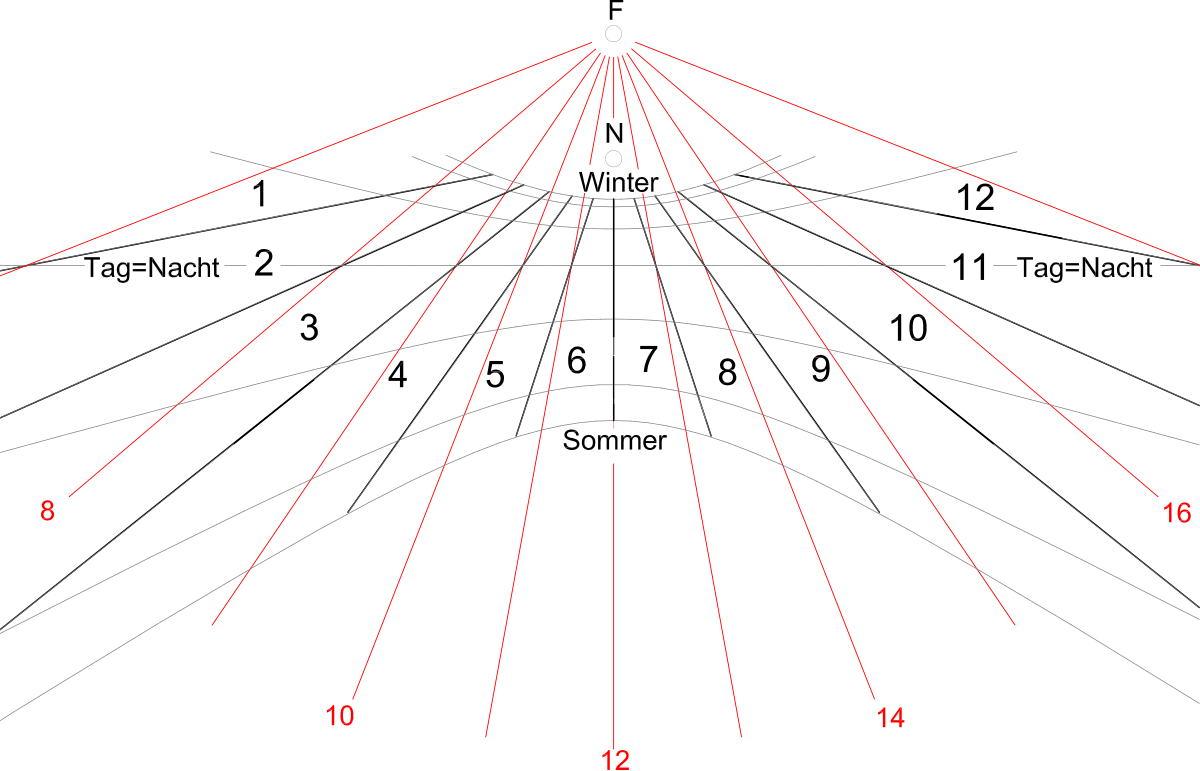Roman dates and months
- Thread starter kev67
- Start date
Yes, they did use the twelve hour clock like we do, except thatI have been wondering about times of day. Sometimes I read terms like sextium hora. Did the Romans use the twelve hour clock / twenty-four hour day like we do?
1) Ancient Romans used real hours (while we use purely conceptual hours, which equals to the hour of the middle of the time zone at the moment of the æquinoxe).
2) The sun always rise at the first hour of the day, for Ancient Romans (while, it can rise at any hour in our system -depending of the exact moment of the season, of the exact geographical position, compared to the time zone, of how is managed daylight saving time).
For Ancient Romans:
The first hour of the day always starts with the dawn.
The sixth hour of the day ends at the real midday, when the sun is at the zenith.
The twelfth hour of the day always ends with the twilight.
I don't know how they determined the hours of the night (with the course of stars, perhaps?), but:
The first hour of the night always starts when ends the twilight.
The sixth hour of the night always ends at the real midnight.
The Twelfth hour of the night always ends when starts the dawn.
It was common, in a military fashion, to group night hours by three, into four vigils.
Last edited:
That must mean hours changed in length depending on the time of year. I suppose they used a sundial to estimate the daytime hour. Estimating the nighttime hour must have been more difficult.Yes, they did use the twelve hour clock like we do, except that
1) Ancient Romans used real hours (while we use purely conceptual hours, which equals to the hour of the middle of the time zone at the moment of the æquinoxe).
2) The sun always rise at the first hour of the day, for Ancient Romans (while, it can rise at any hour in our system -depending of the exact moment of the season, of the exact geographical position, compared to the time zone, of how is managed daylight saving time).
For Ancient Romans:
The first hour of the day always starts with the dawn.
The sixth hour of the day ends at the real midday, when the sun is at the zenith.
The twelfth hour of the day always ends with the twilight.
I don't know how they determined the hours of the night (with the course of stars, perhaps?), but:
The first hour of the night always starts when ends the twilight.
The sixth hour of the night always ends at the real midnight.
The Twelfth hour of the night always ends when starts the dawn.
It was common, in the army, to group night hours by three, into four vigils.
Yes, hours changed in length depending of the time of the year and they used sundial to estimate the daytime hour.

 en.wikipedia.org
en.wikipedia.org
I really don't know how Ancient Romans estimated nighttime hours, but Ancient Ægyptians did by checking stars rises.

 en.wikipedia.org
en.wikipedia.org

Unequal hours - Wikipedia
 en.wikipedia.org
en.wikipedia.org
I really don't know how Ancient Romans estimated nighttime hours, but Ancient Ægyptians did by checking stars rises.

Decan - Wikipedia
 en.wikipedia.org
en.wikipedia.org
Wikipedia has a nice illustration of the length differences for Roman hours. It also mentions the division of the night into four vigiliae (watches); in my experience in reading Latin texts, that division was more frequently used when reporting events at night than quoting hours, probably because without the sun being visible and without having water clocks at hand, it was easier to determine during what watch an event occured than during which night hour.
I imagined the vigliae would be about the same duration throughout the year. I imagined they would use clock candles or sand timers to time the watches. I suppose they were better at reading the stars, moons and planets than we are.Wikipedia has a nice illustration of the length differences for Roman hours. It also mentions the division of the night into four vigiliae (watches); in my experience in reading Latin texts, that division was more frequently used when reporting events at night than quoting hours, probably because without the sun being visible and without having water clocks at hand, it was easier to determine during what watch an event occured than during which night hour.
